Guidance has been updated and published in light of moving to step 4 of the Covid-19 roadmap in England.
Hospitality:
From the 19th of July, you should follow the guidance in the updated document – Working safely during coronavirus (COVID-19): guidance from Step 4
The guidance is designed to be relevant to any food preparation or service setting where food and drink is sold for consumption at venues or for takeaway or delivery.
For example:
- restaurants
- pubs
- bars
- nightclubs
- beer gardens
- food to go
- cafes
- social and similar clubs operating as bars and restaurants
- mobile catering and contact catering or similar environments where food and drink is purchased and consumed at a venue in their indoor or outdoor areas or offered for takeaway or delivery
N.B:
It does not apply to food preparation or food service in clinical or healthcare settings.
If you also provide accommodation services, you should refer to guidance for accommodation.
If you provide entertainment or run events at your venue, refer to the events and attractions guidance.
The document gives you guidance on how to open workplaces safely while reducing the risk of spreading COVID-19. It provides practical considerations of how to apply this in the workplace.
You will need to translate this into the specific actions you need to take. These will depend on the nature of your business, including the size and type of business, how it’s organised, operated, managed and regulated. You will also need to monitor these measures to make sure they continue to protect customers and workers.
This guidance does not supersede your existing legal obligations relating to health and safety, entertainment licensing and regulations, employment, and equalities duties. It’s important that as a business or an employer you continue to comply with your existing obligations. This includes those relating to equality between individuals with different protected characteristics. This contains non-statutory guidance to take into account when complying with these existing obligations.
Remember this guidance does not just cover your employees. You must also take into account customers, agency workers, contractors and other people.
To help you decide which actions to take, you must carry out an appropriate risk assessment. This risk assessment must be done in consultation with unions or workers, you may also want to consult industry representatives.
The guidance covers:
- Managing service of food and drink at a venue
- Customer toilets
- Working in other people’s homes
- Customer cloakrooms
- Carrying out customer searches safely
We have picked out some of the key information from the guidance that you will be looking for but urge you to read the document in full https://www.gov.uk/guidance/working-safely-during-covid-19/restaurants-pubs-bars-nightclubs-and-takeaway-services#hospitality-2-1
Carry out a Covid-19 specific Risk Assessment for your business using the considerations in this guidance.
Test & Trace:
Hospitality venues are encouraged to display an official NHS QR code poster. Although it’s not legally required to do so, this will support NHS Test and Trace to contact those who may have been exposed to COVID-19 so that they can book a test. You can generate an NHS QR code poster online, to enable individuals to check in using the NHS COVID-19 app. You should also have a system in place to record contact details for those who do not have the app.
NHS Covid Pass:
The NHS COVID Pass is a method of COVID-status certification. The NHS COVID Pass allows people to demonstrate that they’re at a lower risk of carrying COVID-19 and transmitting it to others, through vaccination, testing or natural immunity. It can help organisations to reduce the risk of transmission of COVID-19.
The government will work with organisations that operate large, crowded settings (for example, nightclubs) where people are likely to be in close proximity to a large number of those from other households to use the NHS COVID Pass as a condition of entry.
Keeping customers and visitors safe
Consider:
Providing clear guidance on how to reduce the risk of spreading COVID-19 people before and when they arrive. For example, by phone, on the website or by email, and with signage and visual aids.
Encouraging customers to use hand sanitiser or handwashing facilities as they enter the venue.
Managing service of food and drink at a venue
Consider:
- Cleaning non-disposable condiment containers after each use, or providing only disposable condiments.
- Reducing the number of surfaces touched by both staff and customers. For example, ask customers not to lean on counters when placing orders.
- Encouraging contactless payments where possible.
- Using screens at points of service, for example at tills and counters, to reduce the risk of COVID-19 spreading between front of house workers and customers
- Ways to reduce risk of COVID-19 spreading because of customer self-service of food, cutlery and condiments. For example, discourage customer self-service or clean frequently touched surfaces regularly.
- Encouraging customers to make orders for takeaway or delivery online, on apps or over the telephone. This will help to reduce queues and stagger pick-up times.
- Encouraging customers to use contactless ordering from tables where available. For example, through an ordering app.
- Minimising contact between kitchen workers and front of house workers, delivery drivers or riders. For example, by having zones from which delivery drivers can collect packaged food items.
Toilets
Consider:
- Using signs and posters to make people aware:
– of how to wash their hands well
– that they should wash their hands frequently
– that they should not touch their faces
– that they should cough or sneeze into a tissue which is binned safely, or into their arms if a tissue is not available
- Making hand sanitiser available on entry to toilets where safe, practical and accessible. Ensure suitable handwashing facilities are available. This includes running water and liquid soap and suitable options for drying. Namely paper towels, continuous roller towels or hand dryers. Consider the needs of people with disabilities.
- Setting clear use and cleaning guidance for toilets, with increased frequency of cleaning in line with usage. You should use normal cleaning products and pay attention to frequently hand touched surfaces. Consider using disposable cloths or paper roll to clean all hard surfaces.
- Keeping the facilities well ventilated. For example, by ensuring any mechanical ventilation works effectively and opening windows and vents where possible.
- Taking special care when cleaning portable toilets and larger toilet blocks.
- Putting up a visible cleaning schedule. Keep it up to date and visible.
- Providing more waste facilities and more frequent rubbish collection.
Ventilation:
Good ventilation brings fresh or cleaned air into indoor spaces. The more fresh air that is brought inside, the more diluted any airborne virus will become. In poorly ventilated spaces, residual virus can remain in the air after an infected person has left and increase the risk of COVID-19 spreading.
You should maximise the supply of fresh air in your premises. You can do this through:
- fully or partially opening windows, air vents and doors to improve natural ventilation
- if you use mechanical ventilation, ensuring that your systems are set to maximise fresh air and minimise air recirculation. Maximising the amount of fresh air your system draws in or ensuring additional fresh air will help avoid COVID-19 spreading
- identifying any poorly ventilated spaces as part of your risk assessment, and taking steps to improve fresh air flow in these areas (see below for further details)
You can also encourage the use of outside space where practical, in particular for higher risk activity such as exercise or when people are singing or raising their voices.
Social distancing:
From Step 4, social distancing guidance no longer applies and there are no limits on social contact between people from different households. COVID-19 can still be spread through social contact. You can mitigate this risk by reducing the number of people your workers come into contact with. Examples of ways to do this include:
- reducing the number of people each person has contact with by using ‘fixed teams or partnering’ (so each person works with only a few others)
- screens or barriers to separate people from each other, or using back-to-back or side-to-side working, instead of face-to-face (screens are only likely to be beneficial if placed between people who will come into close proximity with each other).
Ventilation:
Good ventilation brings fresh or cleaned air into indoor spaces. The more fresh air that is brought inside, the more diluted any airborne virus will become. In poorly ventilated spaces, residual virus can remain in the air after an infected person has left and increase the risk of COVID-19 spreading.
You should maximise the supply of fresh air in your premises. You can do this through:
- fully or partially opening windows, air vents and doors to improve natural ventilation
- if you use mechanical ventilation, ensuring that your systems are set to maximise fresh air and minimise air recirculation. Maximising the amount of fresh air your system draws in or ensuring additional fresh air will help avoid COVID-19 spreading
- identifying any poorly ventilated spaces as part of your risk assessment, and taking steps to improve fresh air flow in these areas (see below for further details)
You can also encourage the use of outside space where practical, in particular for higher risk activity such as exercise or when people are singing or raising their voices.
Cleaning:
Consider:
- Wedging doors open, where appropriate, to reduce touchpoints. This does not apply to fire doors.
- Frequently cleaning objects and surfaces that people touch regularly. This includes counters and tills. Make sure there are adequate disposal arrangements for cleaning products.
- Cleaning surfaces and objects between each customer use. For example, clean tables, card machines, chairs, trays and laminated menus in view of customers before customer use.
- If you’re cleaning after a known or suspected case of COVID-19, referring to the guidance on cleaning in non-healthcare settings.
- Frequently cleaning work areas and equipment between uses. Use your usual cleaning products.
- Providing extra non-recycling bins for workers and clients to dispose of single use face coverings and PPE. You should refer to the guidance for information on how to dispose of personal or business waste, including face coverings and PPE.
- Read government guidance on cleaning food preparation and food service areas.
- Recognising that cleaning measures are already stringent in kitchen areas. Consider the need for additional cleaning and disinfection measures.
- Having bins for collection of used towels and staff overalls.
- Ensuring workers wash their hands before handling plates and cutlery.
- Encouraging a high frequency of hand washing throughout the day.
- Reading government guidance on hygiene in food preparation and food service areas.
- Using signs and posters to make people aware:
– how to wash their hands well
– that they should wash their hands frequently
– that they should not touch their faces
– they should cough or sneeze into a tissue which is binned safely, or into their arms if a tissue is not available
- Providing regular reminders and signage to maintain hygiene standards.
- Providing hand sanitiser in multiple accessible locations in addition to washrooms. Consider the needs of people with disabilities.
- Setting clear use and cleaning guidance for toilets. This is to ensure they’re kept clean.
- Enhancing cleaning for busy areas, for example counters in bars and nightclubs.
- Taking special care when cleaning portable toilets.
- Providing more waste facilities and more frequent rubbish collection.
- Providing hand drying facilities. Provide paper towels, continuous roller towels or electrical dryers.
- Ensuring workers wash their hands after handling customer items and before moving onto another task. For example, after collecting used plates for cleaning and before serving food to another table.
PPE / Face coverings
Where you’re already using PPE in your work activity to protect against non-COVID-19 risks, you should keep doing so. Any use of PPE should be determined by an assessment of risks in the workplace.
Do not encourage the precautionary use of PPE to protect against COVID-19 unless you’re in a clinical setting or responding to a suspected or confirmed case of COVID-19.
A face covering is something which safely covers your mouth and nose.
Face coverings are no longer required by law. However, the government expects and recommends that people continue to wear face coverings in crowded, enclosed spaces.
Where worn correctly, this may reduce the risk of transmission to themselves and others. Be aware that workers may choose to wear a face covering in the workplace.
Self – isolating
- Enable workers to work from home while self-isolating if appropriate. It’s illegal to knowingly allow someone who is being required to self-isolate to come to work.
- See current guidance related to statutory sick pay due to COVID-19:
– Statutory sick pay for employers
– Statutory sick pay for employees
- Ensure any workers who have symptoms of COVID-19 self-isolate immediately and continue for the next 10 full days, even if their symptoms are mild. This means that if, for example, their symptoms started at any time on the 15th of the month their isolation period ends at 11:59pm on the 25th.
These symptoms are:
– a high temperature
– a new, continuous cough
– a loss or change in their normal sense of smell or taste (anosmia)Workers who have tested positive for COVID-19 must self-isolate immediately and continue for the next 10 full days.
Workers that test positive but have no symptoms must also self-isolate in this way. Sometimes workers develop symptoms during their isolation period. In these cases, they must restart their 10-day self-isolation period from the day after they develop symptoms. See the guidance for people who live in households with possible or confirmed COVID-19 infections.
Self-isolating workers who have tested negative for COVID-19 may be able to return to work. Some exceptions apply. See the guidance on when you need to keep self-isolating.
- Ensure any workers who are contacts of individuals who test positive for COVID-19 self-isolate for a period of 10 days. Contacts must self-isolate immediately and continue for the next 10 full days.
- Ensure any workers who have been informed by NHS Test and Trace that they’re a close contact of a person who has had a positive test result for COVID-19 follow the requirement to self-isolate. See the guidance for those who have been in contact with, but do not live with, a person who has tested positive for COVID-19.
Covid-19 outbreaks
You will usually need to:
- Making sure your risk assessment includes an up-to-date plan in case there is a COVID-19 outbreak. This plan should nominate a single point of contact (SPOC) where possible. The SPOC should lead on contacting local Public Health teams.
- If you become aware of any positive cases of COVID-19 in your workplace, you should inform your local authority public health team.
- You should immediately identify any close workplace contacts and ask them to self-isolate. You should not wait for NHS Test and Trace. This prompt action will help reduce the risk of a workplace outbreak.
- If the local PHE health protection team declares an outbreak, you will be asked to:
– record details of staff with symptoms of COVID-19
– assist with identifying contactsYou should therefore ensure all employment records are up to date. You will be provided with information about the outbreak management process. This will help you to:
– implement control measures
– assist with communications to staff
– reinforce prevention messages
You can read the whole document here: https://www.gov.uk/guidance/working-safely-during-covid-19/restaurants-pubs-bars-nightclubs-and-takeaway-services#hospitality-8-1

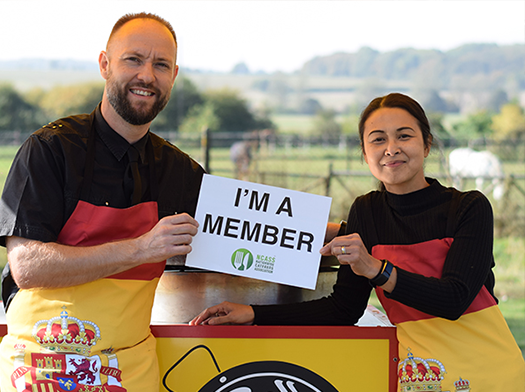
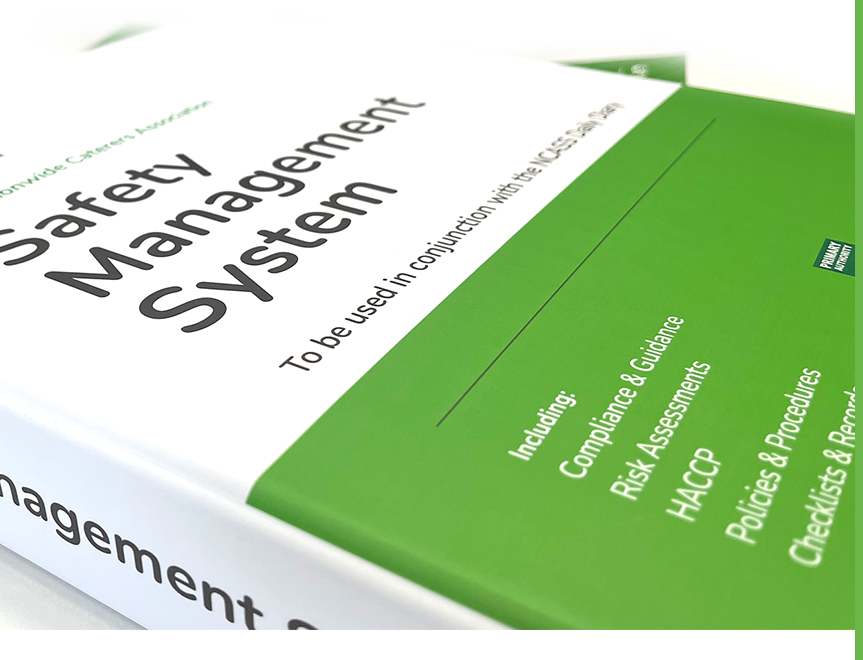
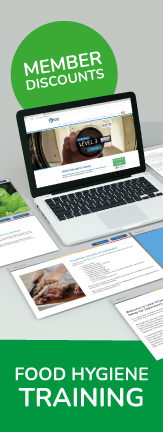

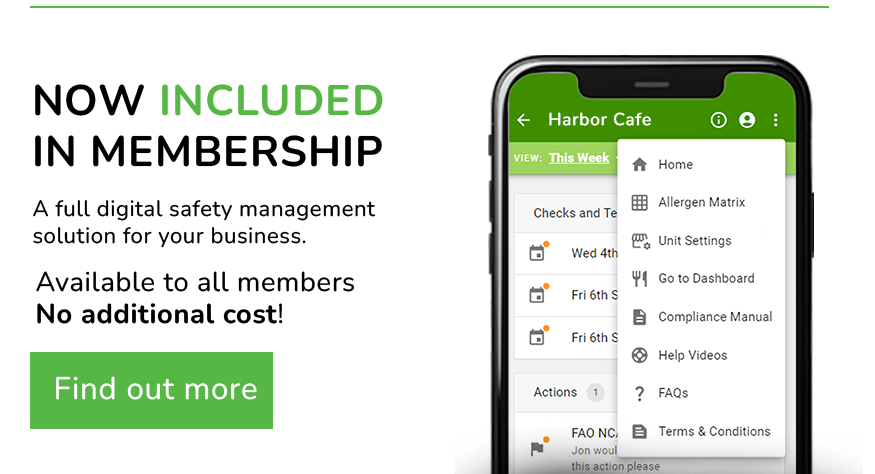
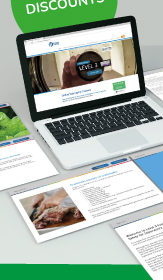 Featured Training
Featured Training
OUR MEMBERSHIP
We're here to help make your catering business a success. Whether that be starting up or getting on top of your compliance and marketing. We're here to help you succeed.
Want our latest content?
Subscribe to our mailing list and get weekly insights, resources and articles for free
Get the emails